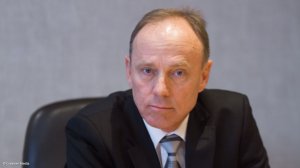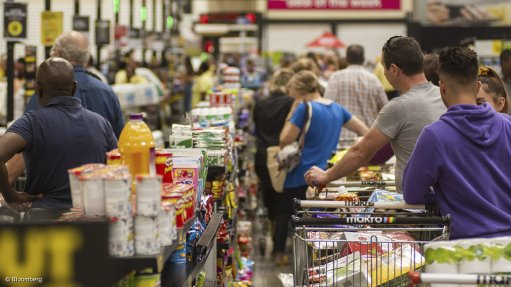Sasol repositions itself for gas-based future

Engineering News Editor Terence Creamer in conversation with Sasol Southern African operations EVP Bernard Klingenberg on the importance of gas, the US and Southern Africa to Sasol’s future. Camera Work & Editing: Darlene Creamer. Recorded: 8.9.2014.
South African energy and chemicals group Sasol has “strategically repositioned” itself over the past three years to focus on gas-based opportunities in Southern Africa and North America, having moved away from coal-to-liquids opportunities in China, Indonesia, India and South Africa.
The repositioning has been associated with a wide-ranging restructuring initiative, as well as a reprioritisation of the JSE-listed group’s capital expenditure (capex) programme, which is set to rise from R40-billion in 2014, to R50-billion this year and R65-billion in 2016.
The shift will result in a relative shrinking of the Southern Africa component of Sasol’s capex spend, with decisions on two US megaprojects likely in the coming months and years. In 2014, Southern Africa absorbed 57% of the group’s overall sustaining and growth capex.
Sasol expects to make a final investment decision on a 1.5-million-ton-a-year ethane cracker in Lake Charles, Louisiana, before the end of the 2014 calendar year – a project that could involve an investment of between $5-billion and $7-billion. A decision on an $11-billion to $14-billion, 96 000 bl/d gas-to-liquids (GTL) facility, also in Louisiana, is likely to be made 18 to 24 months thereafter.
However, CEO David Constable insists that opportunities remain in both South Africa and Mozambique, noting that nine of the 17 largest gas discoveries in the last five years have been in sub-Saharan Africa, with two of the top three being in Mozambique.
“Looking at our growth programmes, the one ingredient that is constant is natural gas,” he says, while underlining the group’s plans to pursue additional gas “monetisation” projects in South Africa and Mozambique.
Sasol intends increasing production from the Pande and Temane fields, where output rose to 116-million gigajoules in 2014. A pipeline expansion is under way, which will increase supply to southern Mozambique and South Africa.
In August, a 175 MW gas-fired power plant was also opened in Ressano Garcia, increasing Sasol’s gas-based electricity production to 350 MW in both countries. It is also planning to submit a field development plan in February next year in a bid to develop its gas reserves in southern Mozambique.
In northern Mozambique, where the really large gas finds have been announced, the South African group has initiated a GTL prefeasibility study together with Eni, of Italy, and Empresa Nacional de Hidrocarbonetos. Eni is the operator of the block called Area 4 in the deep waters of the Rovuma basin, which is estimated to hold up to 85-trillion cubic feet of gas.
Sasol Southern African operations executive VP Bernard Klingenberg says the group is actively seeking to secure gas for the existing business operations in the region, while also investigating the option of participating in the “monetisation of gas in northern Mozambique”.
“There is significant gas, but the monetisation plan for that gas still needs to be developed,” Klingenberg says.
In South Africa, Sasol and Eni have teamed up on an offshore exploration venture of an 82 000 km2 block in the Durban basin, offshore KwaZulu-Natal. A seismic survey has been completed, but Constable says greater certainty is required about South Africa’s legal framework before further investments can be made.
He says it is closely monitoring developments surrounding the Mineral and Petroleum Resources Development Act. “We cannot move with any type of exploration in South Africa until those [legal] details are nailed down for us.”
In addition, while it is pursuing gas value-addition opportunities in both North America and northern Mozambique, where Sasol is not the owner of the gas resource, Constable says “integration of the value chain” remains important.
Sasol will, therefore, continue to pursue projects to increase ownership of natural gas feedstocks in Southern Africa, but it has a “natural hedge” in North America with its shale-gas assets in Canada, which “cover a good portion of our GTL aspirations in North America – we think it’s appropriate to have the 70% coverage”.
The group is also comfortable with long-term contracts and a 20% spot-market exposure for its ethane cracker supply, in Louisiana. “But obviously integration is a key strategy for us,” Constable concludes.
Comments
Press Office
Announcements
What's On
Subscribe to improve your user experience...
Option 1 (equivalent of R125 a month):
Receive a weekly copy of Creamer Media's Engineering News & Mining Weekly magazine
(print copy for those in South Africa and e-magazine for those outside of South Africa)
Receive daily email newsletters
Access to full search results
Access archive of magazine back copies
Access to Projects in Progress
Access to ONE Research Report of your choice in PDF format
Option 2 (equivalent of R375 a month):
All benefits from Option 1
PLUS
Access to Creamer Media's Research Channel Africa for ALL Research Reports, in PDF format, on various industrial and mining sectors
including Electricity; Water; Energy Transition; Hydrogen; Roads, Rail and Ports; Coal; Gold; Platinum; Battery Metals; etc.
Already a subscriber?
Forgotten your password?
Receive weekly copy of Creamer Media's Engineering News & Mining Weekly magazine (print copy for those in South Africa and e-magazine for those outside of South Africa)
➕
Recieve daily email newsletters
➕
Access to full search results
➕
Access archive of magazine back copies
➕
Access to Projects in Progress
➕
Access to ONE Research Report of your choice in PDF format
RESEARCH CHANNEL AFRICA
R4500 (equivalent of R375 a month)
SUBSCRIBEAll benefits from Option 1
➕
Access to Creamer Media's Research Channel Africa for ALL Research Reports on various industrial and mining sectors, in PDF format, including on:
Electricity
➕
Water
➕
Energy Transition
➕
Hydrogen
➕
Roads, Rail and Ports
➕
Coal
➕
Gold
➕
Platinum
➕
Battery Metals
➕
etc.
Receive all benefits from Option 1 or Option 2 delivered to numerous people at your company
➕
Multiple User names and Passwords for simultaneous log-ins
➕
Intranet integration access to all in your organisation



















